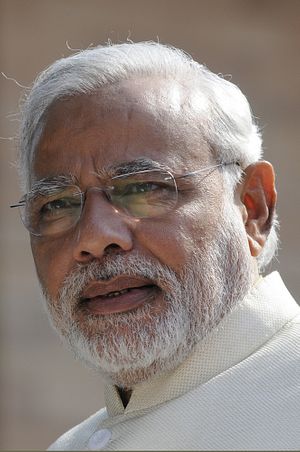The Indian states of Maharashtra (which includes India’s financial capital Mumbai) and Haryana (which is essentially Delhi’s backyard) held state elections on October 15. Indian Prime Minister Narendra Modi’s Bharatiya Janata Party (BJP) are projected to win in both; results will be announced on Sunday. The political systems of Indian states are microcosms of India’s central government’s parliamentary system. The largest party or dominant coalition in each state’s legislative assembly gets the chance to form that state’s government and to elect its chief minister, similar to the manner by which India’s parliament elects its prime minister after an election.
The elections in Maharashtra and Haryana occurred after a hard-fought campaign by various parties. This was especially true in Maharashtra where the BJP and its longtime ally, the regional Shiv Sena, split up and contested the elections against each other. Shiv Sena means Shivaji’s Army; Shivaji was a 17th century Maratha warrior from today’s Maharashtra who fought the Mughals and has acquired a folk-hero status as a champion of Hinduism. The Shiv Sena is known as a strongly right-wing, regionalist, pro-Maharashtra party that often scapegoats other Indian ethnic groups (of which there are many, especially in Mumbai), for Maharashtra’s problems. During the electoral campaign, the Shiv Sena appropriated the legacy of Shivaji and attacked other parties as invaders of Maharashtra that needed to be defeated. However, Prime Minister Modi, who campaigned heavily in Maharashtra, also deftly used Shivaji’s legacy by portraying him as a pan-Indian nationalist.
More and more, Indians seem to be agreeing with the BJP’s version of right-wing politics, which focuses on development and pan-Indian and pan-Hindu nationalism. This vision is particularly popular with India’s expanding middle-class. The parties and movements that are hurt the most by this way of thinking are caste-based and regional nativist parties that pander to specific groups on the basis of identity. Thus, the BJP has been able to expand out of its traditional Hindu nationalist base to become a party of both the middle-class and a large portion of the pro-development poor.
After the BJP’s triumph at the national level and in various state assemblies, the party seems set to become India’s first truly national party after the Congress Party. For much of India’s post-independence period, the Congress Party was the only Indian party that really had a presence everywhere in India. At both the federal and regional levels, it faced off against a variety of different, mostly local parties, many of which came and went. Many of these parties were based on caste or language and were run by glorified thugs as family businesses. However the emergence of the BJP across India, outside of its traditional heartland in western and northern India, seems to be changing this. In many ways, this is a good thing. It means that India is moving towards a stable two-party system and away from the permanent political fragmentation and gridlock that characterized the past two decades.
While the BJP’s gains in Maharashtra and Haryana prove that the party is expanding and not losing its steam after its triumph at the national level in May, the party has increasingly relied on Modi’s reputation to win elections. The BJP should take advantage of its victories to develop institutions to maintain a permanent presence in new areas in order to survive and bounce back when not in power. Institutional strength over the decades is one of the Congress Party’s advantages over other Indian parties.
One of the most interesting things about this election is how the Indian political system is increasingly adapting some aspects of American political culture. A style of campaigning, reminiscent of American campaigning, with heavy media use and a focus on the party’s leading figures seems to be increasingly used by Modi to his advantage. This style of campaigning sharply diverges from the traditionally less intensive style of campaigns favored by politicians from other Indian parties.
These elections have shed some light on Modi’s strategy for the next few years. Modi has been criticized in some quarters for not implementing economic reforms quickly enough since becoming Prime Minister. According to a report by Standard & Poor’s, Modi is waiting until at least next year to make bolder reforms. His goal is to win an increasing number of state elections for the BJP (which only controls five states) before implementing bolder reforms. Having more states under BJP control makes sense in the context of India’s federal system as it would make the actual implementation of reforms more plausible. Additionally, winning state elections enables the BJP to elect members of the upper house of India’s parliament, which is still not controlled by the BJP. This step is necessary for the passage of important reforms.
If Modi had tried to pass reforms immediately after becoming prime minister, it might have cost the BJP some state elections. Next year, several more states go to the polls. If the BJP wins these states, along with Haryana and the essential Maharashtra, it will be in a much better position to implement reforms, as it will then be able to command the loyalty of several important states as well as the Lok Sabha. It could further gain seats in the Rajya Sabha, approaching the coveted status of holding a majority in both houses of parliament. In the meantime, Modi is trying to make India function better through bureaucratic reform and by scrapping archaic laws.
































